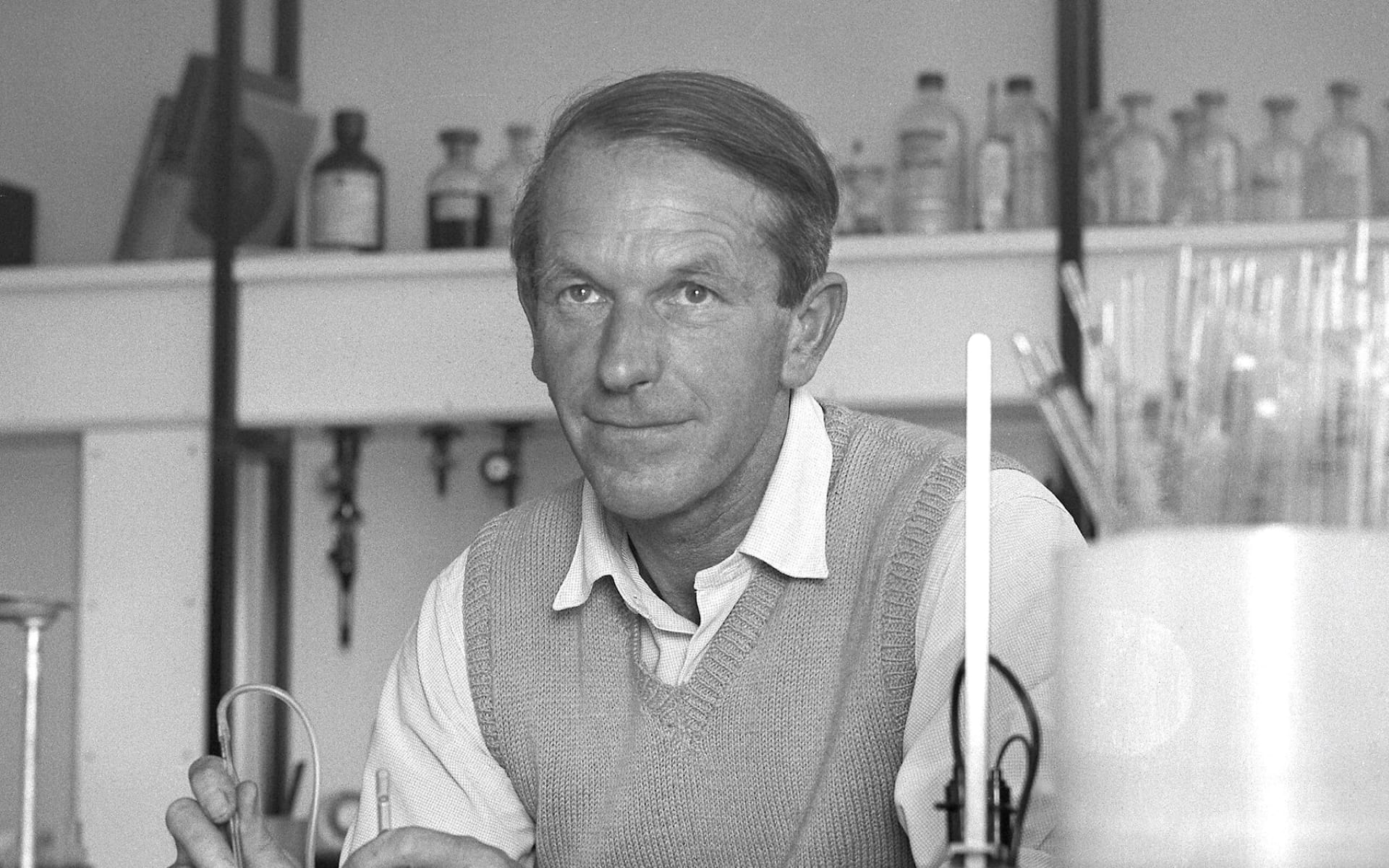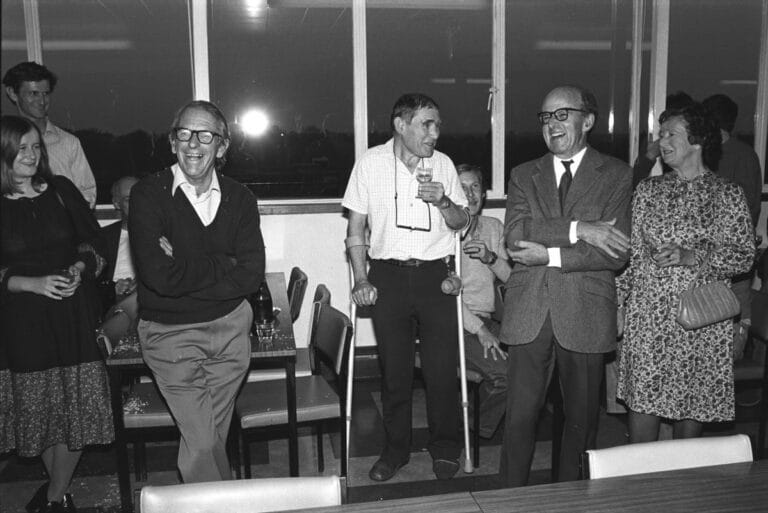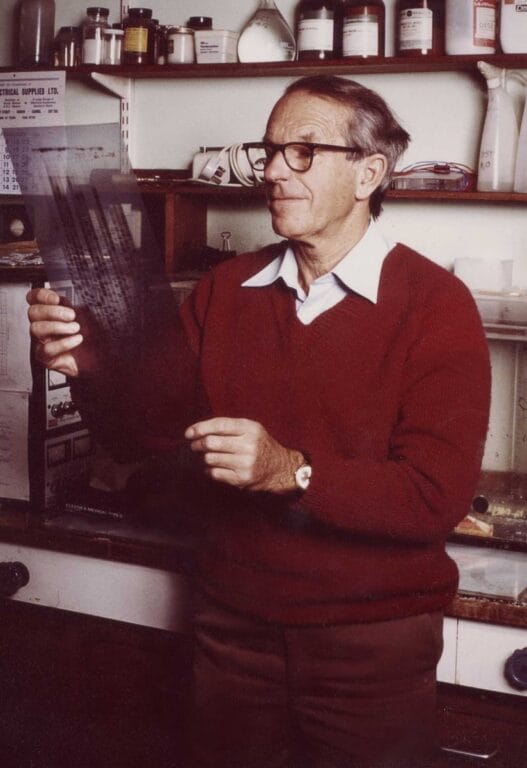Giants in genomics: Fred Sanger

The Sanger Institute takes its name from the double Nobel Prize winner and ‘father of genomics’, Frederick Sanger.
Key terms
DNA sequencing
The process of determining the order of bases in a section of DNA.
Genome
The complete set of genetic instructions required to build and maintain an organism.
The DNA sequencing techniques Fred Sanger and his colleagues developed during the 1970s are still being used today in genomics. His pioneering work defined genomics and provided the foundation for the way we explore genomes today, both at the Sanger Institute and worldwide.
Early life
Fred Sanger was born in Gloucestershire in 1918. His interest in biology originally stemmed from his father, a doctor, and Fred initially set out to study medicine at the University of Cambridge. During his time there he specialised in biochemistry, allowing him the opportunity to work alongside some of the world’s leading biochemists. It might be no surprise then that his work in biochemistry inspired him to leave the path of medicine and continue into biochemistry. As a conscientious objector during the Second World War Fred was able to continue with a PhD. During the early 1940s, new scientific methods of protein separation and purification were being developed, providing scientists with the first glimpses of the chemical structure of protein molecules. It was certainly an exciting time to be a scientist.
Sanger sequencing
Over the next few years, Fred developed methods to determine the sequence of building blocks making up the protein insulin. This led to his first Nobel Prize in Chemistry in 1958 which spurred him on and led him to move to the new Medical Research Council Laboratory of Molecular Biology in Cambridge, UK, in 1962. This institution was renowned for its fundamental work in the then new science of protein sequencing.

Whilst in Cambridge, Fred was surrounded by researchers investigating DNA and genes and he was presented with the challenge of determining the order of the bases in DNA, also known as DNA sequencing. At that time, no methods existed to read the genetic code, even in the simplest of genomes. So, over the next 15 years, this was the focus for Fred and his team, to develop methods to allow scientists to sequence DNA. This led to the ‘Sanger’ DNA sequencing method, where 500-800 bases could be read at a time. His work was rewarded in 1980 when he received his second Nobel Prize in Chemistry. This put Fred in a select club of people who have been awarded two Nobel Prizes (another is Marie Curie who received two Nobel Prizes for her work in physics).

The Sanger Centre
Fred retired shortly after this and devoted all of his time to domestic life. He officially opened the Sanger Centre, now named the Wellcome Trust Sanger Institute, on the 4th October 1993, setting the next generation of genome scientists off on a new chapter of genomics, sequencing the first human genome.
Fred Sanger died in 2013 aged 95. He was described by his fellow colleagues and researchers as "one of the greatest scientists of any generation" and is considered by many as the "father of genomics". However, despite these accolades, Fred remained an incredibly modest man throughout his life. He was always keen to work with his students at the bench rather than direct them from a distance and consistently said that his focus was simply on making his methods work to solve problems, rather than on the larger implications.